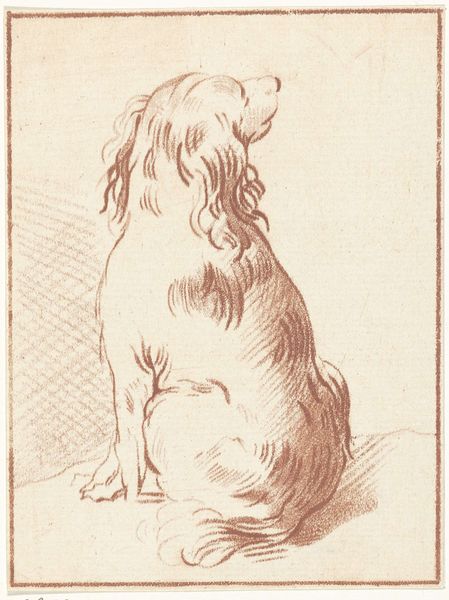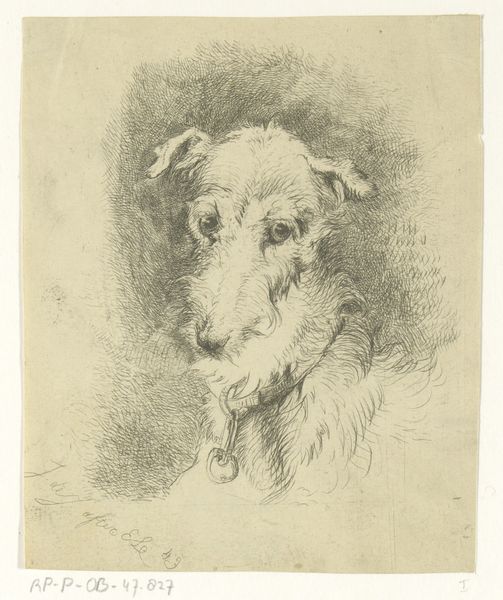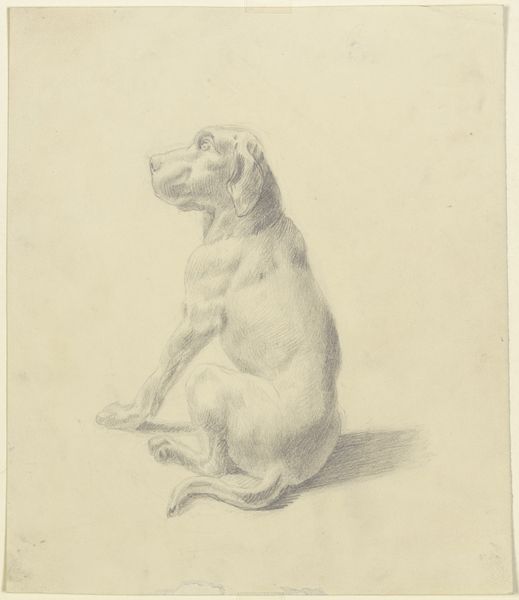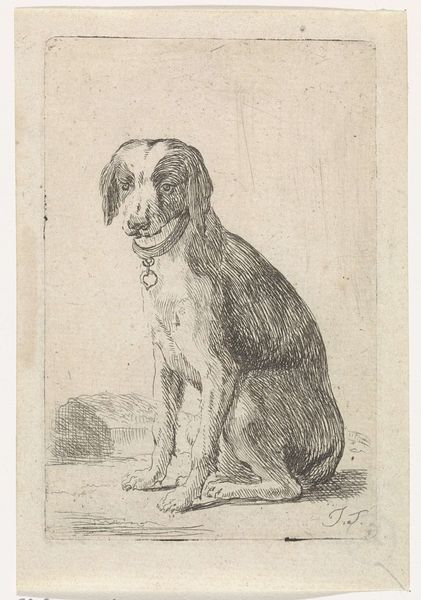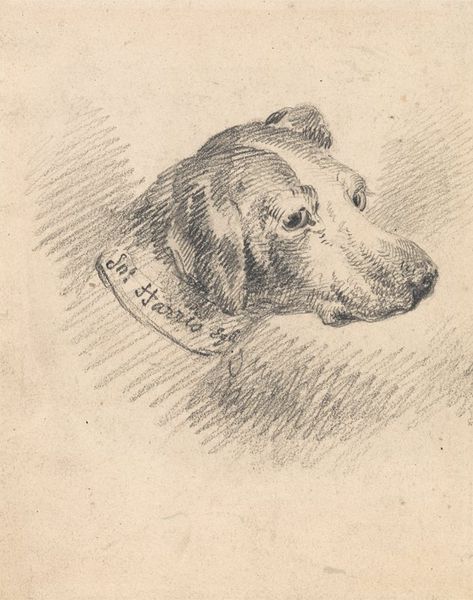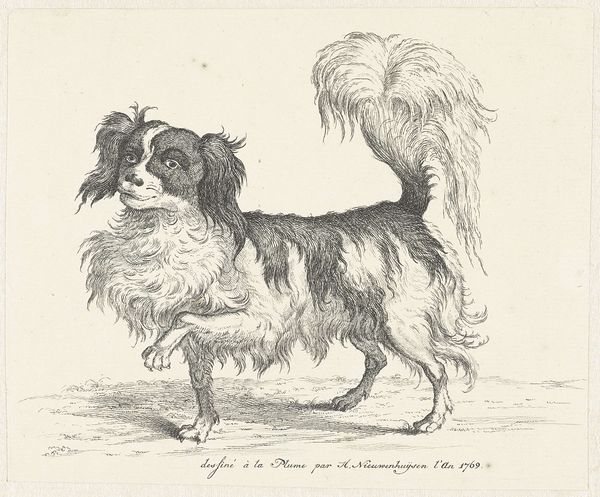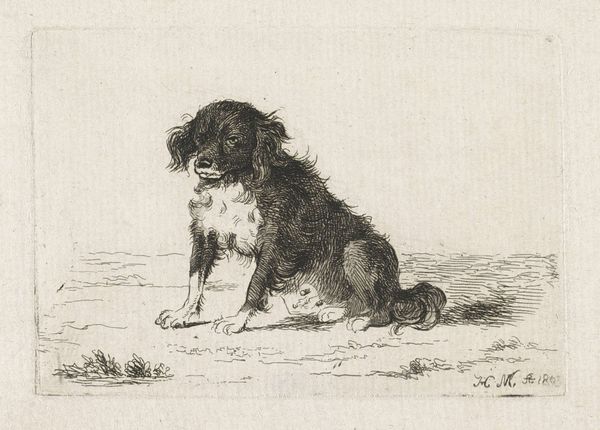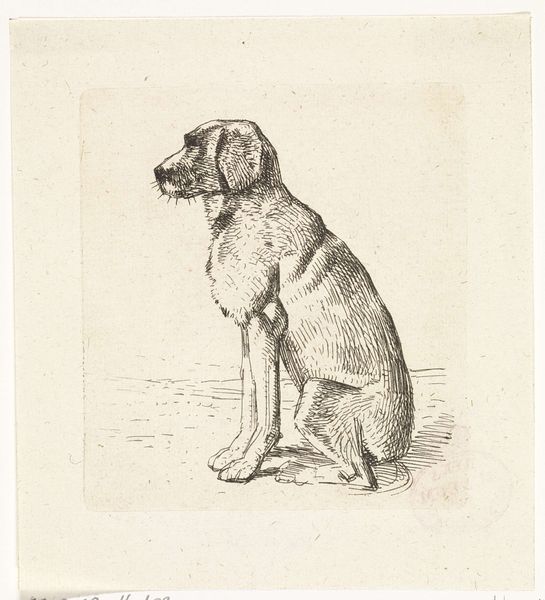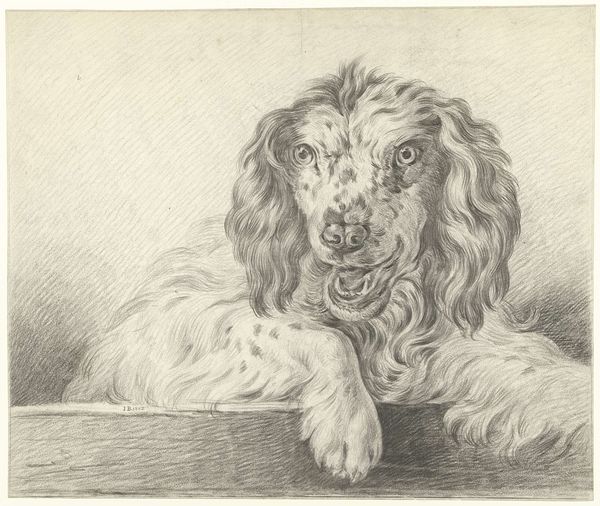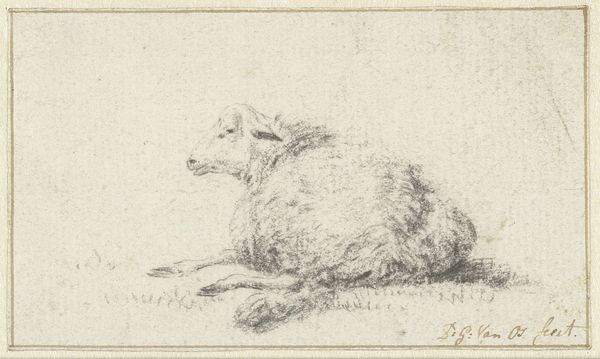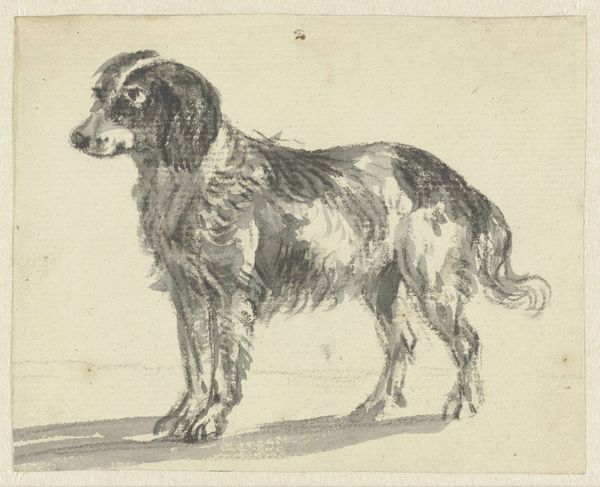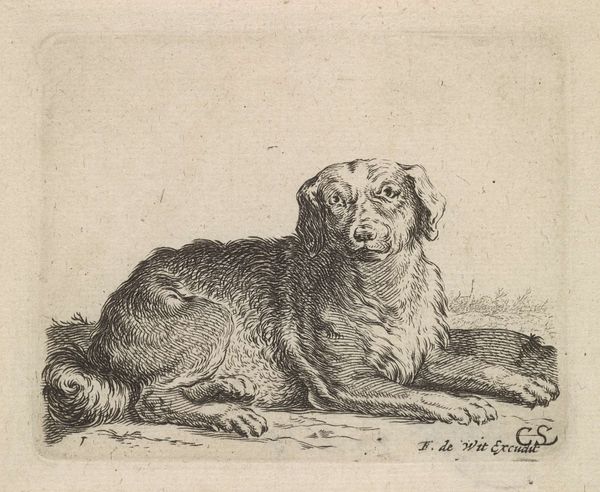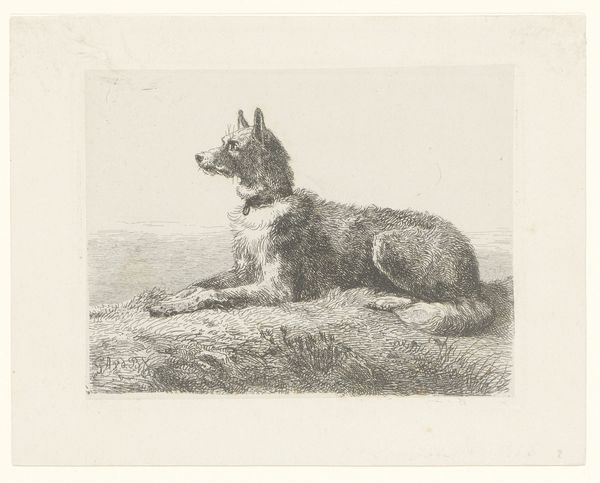
#
pencil drawn
#
light pencil work
#
pencil sketch
#
dog
#
charcoal drawing
#
pencil drawing
#
animal drawing portrait
#
portrait drawing
#
pencil work
#
pencil art
#
botanical art
Dimensions: height 164 mm, width 133 mm
Copyright: Rijks Museum: Open Domain
Curator: Before us, we have a drawing called "Seated Dog." It’s attributed to Cornelis Visscher, dating from around 1650 to 1700, and resides here at the Rijksmuseum. Editor: What strikes me immediately is the soft texture. The artist has managed to convey so much character and furriness with what looks like simple pencil work. It feels quite intimate. Curator: It's fascinating to consider how dogs started appearing more frequently in portraiture during this era, especially among the rising merchant class. Dogs were no longer just working animals, but symbols of domestic comfort and social status. Visscher, though better known for his engravings, beautifully captures this shift here. Editor: The line work also hints at that shift. It looks quickly rendered, almost a study, but there’s an assuredness that comes from a well-practiced hand, a clear understanding of form. It almost feels like he’s capturing not just the dog, but also something about the sitter's wealth and its leisurely, pampered lifestyle. Curator: Absolutely. Visscher would have been keen to observe these emerging trends within Dutch society, providing imagery tailored to a very specific and evolving market. Dogs, and the luxury associated with them, become signifiers. The artistic labor then mirrors the shifting economic landscape. Editor: Look closer. You can really see how the varying pressure applied with the pencil gives depth. See how the chain around his neck appears subtly rendered, clearly showing the dog belonged to someone of importance. These delicate material choices emphasize that luxury you mentioned. Curator: I think examining this sketch provides us an intriguing perspective on the intersection of artistic creation and the growing role of status symbols during the Dutch Golden Age. It reveals a fascinating story through the portrayal of something seemingly ordinary. Editor: For me, I walk away with an appreciation of what can be done with humble materials. It prompts us to value what everyday objects can tell us about cultural tastes and class relations.
Comments
rijksmuseum about 2 years ago
⋮
The Haarlem artist Cornelis Visscher drew his animals like his portraits of people: lively and unidealized. The artist here relayed characteristic features of this little papillon, such as the quivering pose and bulging eyes. This drawing is a copy of a sheet in the Frits Lugt Collection in Paris. Both of these worked-up drawings may have been intended for sale as independent works of art.
Join the conversation
Join millions of artists and users on Artera today and experience the ultimate creative platform.
